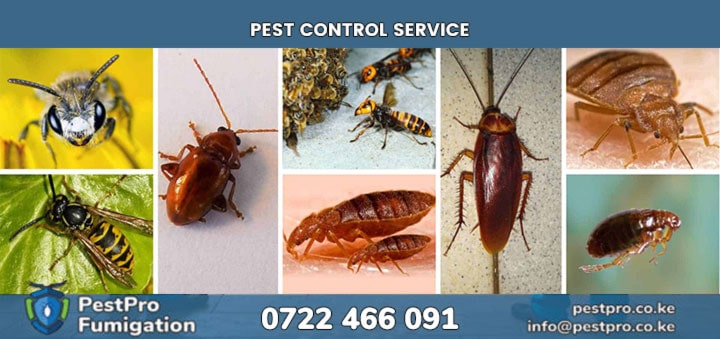Pests in Kileleshwa pose a significant challenge for residents and businesses, as the area's lush greenery and urban setting create an ideal environment for various unwanted creatures. This article provides a comprehensive overview of the most common pests in Kileleshwa, detailing their characteristics, behaviors, and potential risks in a structured table. Understanding these pests is essential for effective pest management and maintaining a safe, hygienic living space.
Common Pests in Kileleshwa: A Detailed Overview
The prevalence of pests in Kileleshwa is driven by the area's warm climate, abundant vegetation, and proximity to both residential and commercial spaces. Below is a detailed table listing the most frequently encountered pests in Kileleshwa, along with their descriptions, habits, and associated risks.
| Pest | Description | Habits | Risks |
|---|---|---|---|
| Bed Bugs | Small, reddish-brown, wingless insects, about 5mm long, that feed on human blood. | Nocturnal, hiding in mattresses, furniture, and cracks during the day. | Cause itchy bites, potential allergic reactions, and sleep disturbances. |
| Cockroaches | Flat, brown insects, 1-2 cm long, with long antennae and rapid movement. | Active at night, thrive in warm, moist areas like kitchens and bathrooms. | Spread bacteria, contaminate food, and trigger allergies or asthma. |
| Termites | Small, pale insects living in colonies, often mistaken for ants. | Feed on wood, causing structural damage; prefer damp, hidden areas. | Severe property damage, costly repairs if infestations are not addressed. |
| Rodents (Rats/Mice) | Small mammals with sharp teeth, long tails, and agile bodies. | Nest in hidden areas, chew through materials, and contaminate food. | Spread diseases like leptospirosis, damage property, and cause fires. |
| Mosquitoes | Small, flying insects with slender bodies and long legs. | Breed in stagnant water, active at dusk and dawn, feed on blood. | Transmit diseases like malaria and dengue, cause itchy bites. |
| Ants | Tiny, social insects, often black or red, forming organized colonies. | Invade homes for food, particularly sweets, and form trails. | Contaminate food, cause minor structural damage in large infestations. |
| Fleas | Tiny, wingless insects with strong legs, jumping long distances. | Feed on blood of pets and humans, hide in carpets and pet bedding. | Cause itchy bites, transmit diseases, and lead to pet discomfort. |
| Bees | Flying insects with striped bodies, often found in hives or swarms. | Pollinators but can nest in walls or trees, becoming aggressive if disturbed. | Risk of painful stings, potential allergic reactions, and swarm dangers. |
Did You Know?
"Pests in Kileleshwa, such as termites, can cause significant structural damage, with repair costs averaging thousands of shillings if infestations are left unchecked." – Ecofumitech Pest Control
Why Pests in Kileleshwa Are a Concern
Pests in Kileleshwa are more than just a nuisance; they pose health, hygiene, and property risks. For instance, cockroaches and rodents can spread bacteria, leading to foodborne illnesses, while mosquitoes are vectors for serious diseases like malaria. Termites, a prevalent issue in Kileleshwa, are particularly destructive, as they silently consume wooden structures, compromising building integrity. Bed bugs, another common pest in Kileleshwa, disrupt sleep and cause skin irritations, impacting quality of life.
The combination of Kileleshwa’s tropical climate and urban environment creates a breeding ground for these pests. Stagnant water in poorly maintained drainage systems attracts mosquitoes, while food waste in residential areas lures ants and rodents. Effective pest control is crucial to mitigate these risks and maintain a healthy living environment.
Expert Insight
"Regular inspections and eco-friendly pest control methods can prevent infestations of pests in Kileleshwa, ensuring long-term safety for homes and businesses." – Pest Flash
Effective Management of Pests in Kileleshwa
Addressing pests in Kileleshwa requires a proactive approach, combining prevention and professional intervention. Here are key strategies to manage these pests effectively:
- Regular Inspections: Schedule periodic checks by professional pest control services to identify early signs of infestations, especially for termites and bed bugs.
- Sanitation Practices: Maintain cleanliness by securing food, disposing of waste properly, and eliminating standing water to deter pests like mosquitoes and cockroaches.
- Sealing Entry Points: Close gaps in walls, windows, and doors to prevent rodents and insects from entering homes or businesses.
- Eco-Friendly Solutions: Opt for environmentally safe pest control methods, as offered by companies like Pest Flash and Ecofumitech, to minimize health risks.
- Professional Fumigation: Engage licensed pest control services, such as those approved by the Kenya Poisons Board, for comprehensive fumigation targeting pests in Kileleshwa.
Pro Tip
"For pests in Kileleshwa like bed bugs, washing bedding at high temperatures and vacuuming regularly can significantly reduce infestations before they escalate." – KitutoAfrica
Choosing the Right Pest Control Service
Selecting a reliable pest control provider is critical for managing pests in Kileleshwa. Companies like Pest Flash, Ecofumitech, and Ella Fumigation offer tailored solutions, including eco-friendly treatments and emergency services. When choosing a service, ensure they are licensed by relevant authorities, such as the Pest Control Board, and use safe, effective methods. Regular maintenance plans can also prevent recurring infestations, providing long-term protection.
By understanding the pests in Kileleshwa and implementing strategic pest management, residents and businesses can maintain a safe, pest-free environment. Prompt action and professional support are key to addressing these challenges effectively.
More pest Control ServicesPestPro Facebook Page
Medium
